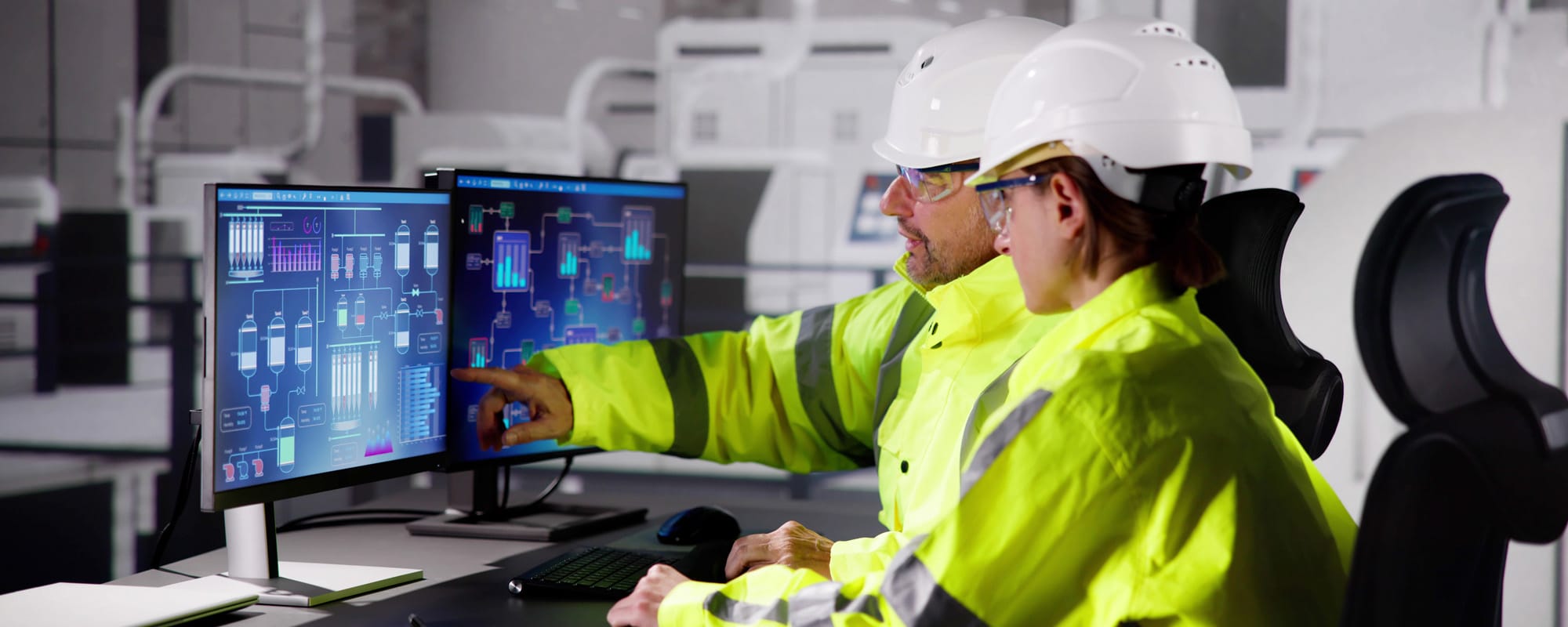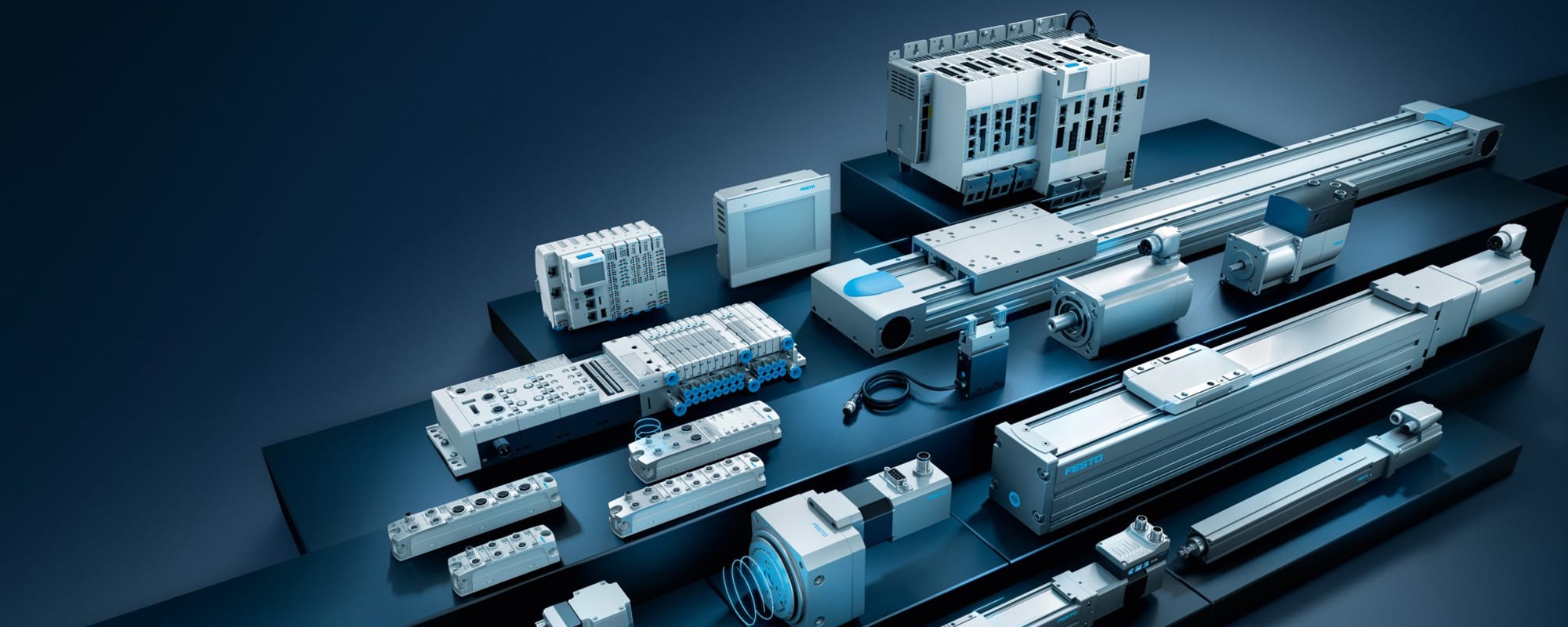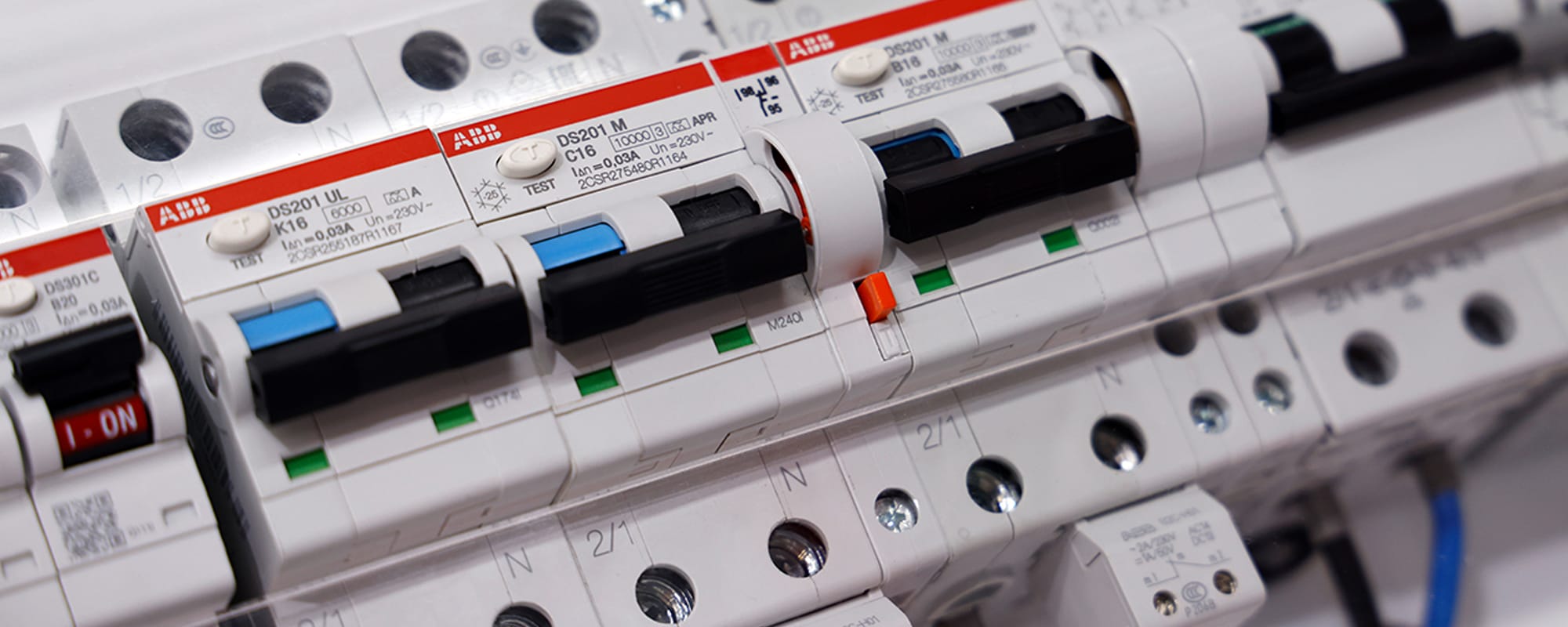Edge computing allows operators to gather more data from their system and better leverage how that data is used. Red Lion Field Application Engineer Joe Wagner addresses edge computing and the various benefits it can provide in industrial operations — especially when used in a hybrid configuration with cloud integration — and introduces Red Lion’s FlexEdge intelligent automation platform.
Joe Wagner, Field Application Engineer at Red Lion
It’s no secret that data is an invaluable resource for businesses. However, seasoned industrial automation operations are comprised of a wide variety of components — many of which have been around for decades — with differing communication protocols that are often not compatible. As a result, operators may not be getting as much data from their systems as they could.
Red Lion Field Application Engineer Joe Wagner joined us to discuss how edge computing can help devices speak the same language and provide operators with faster, more secure data.

I’m Joe Wagner, a field application engineer at Red Lion. I’ve been interested in electronics since a young age and developed a curiosity in coding in grade school when I realized that it could be a form of creative expression.
I went on to graduate with a bachelor’s degree in electronics engineering from Indiana State University and then a master’s with a concentration in automation and controls.
Upon graduating, I worked as a PLC programmer in the manufacturing sector before moving into a similar role in the water and wastewater field. I then worked as a supervisory control and data acquisition (SCADA) engineer in the utility-scale solar sector. Having used Red Lion products in those roles, I was excited for the opportunity to join the company in the role I have now. I regularly engage with and train users on Red Lion products. I develop instructional content, highlight new features, develop demo programs, and help users get the most out of Red Lion products in general.
Please also introduce us to Red Lion.
Red Lion has over 50 years of experience in the industrial market, focused on connecting users to their data. We believe that data is one of the most valuable assets that businesses have, and we pride ourselves on offering several industrial automation products that help users access that data securely in real time, keep their networks connected and protected, and visualize their data, whether onsite or remotely.
This includes products such as our powerful edge gateways, managed network switches, and rugged feature-packed HMIs [human machine interfaces]. These are essentially touchscreen control systems that can withstand harsher environments and conditions, including a wide range of temperatures and higher shock and vibration ratings.
You joined us today to discuss edge computing and automation. What is edge computing, and what role does it play in industrial automation systems?
At a high level, edge computing refers to processing and analyzing data closer to where it is generated, as opposed to sending it off to a central data center for processing and analysis. Typically, when it comes to industrial automation, localized computing is done via an industrial edge gateway device or edge computer, which gathers data and interacts with multiple devices in real-time.
One of the biggest benefits of edge computing’s local processing is that it ensures the fastest possible response time to critical issues with the least amount of latency.
For example, if a system is experiencing a critical high-temperature alarm, which could cause major issues if not addressed immediately, speed is essential. In a cloud-only computing model, the high temperature reading would need to be sent to the cloud before registering and sounding an alarm. Using edge computing, you remove any lag or potential for communication breakdowns.
Edge computing can be found in most industries — such as manufacturing, oil and gas, and agriculture — and particularly those that benefit from faster response times and lower latency.
How does edge computing compare to other industrial computing systems? What are its advantages or benefits?
By bringing computing resources closer to data sources, including sensors and machines, edge computing can deliver faster access to data, increased network bandwidth, improved reliability, and enhanced security.
Edge computing and cloud computing are often compared. However, businesses can benefit from a hybrid model that incorporates both. In this scenario, initial data processing and time-sensitive tasks are handled at the edge, and more complex analytics are offloaded to the cloud.
How does edging computing tie into Industry 4.0 and other digitalization trends?
Edge computing plays a critical role by bridging the gap between operational technology (OT) and information technology (IT).
For example, an edge gateway device accepts communications from a wide range of inputs, some of which may be decades-old components within an existing system. Edge gateways can take readings from both old and newer devices and then send that data to the cloud for further analysis, allowing businesses to track data and trends like never before.
This gives companies the opportunity to harness the power of the latest innovative technology despite having legacy components. There isn’t a need to replace the system as a whole to still garner the benefits of the digital age. With the right edge computing devices, disparate devices and protocols that previously could not communicate with each other now have a translator.
In addition, the latest edge technology has advanced features, such as networking and firewall functionality, which brings concepts from the IT security world to OT. In a best-case scenario, edge devices are perfectly split between IT and OT categories.
In which industrial sectors is edge computing widely used or most beneficial? Why?
Edge computing benefits a wide range of industrial sectors. Its advantages — including lower latency, improved security, and reduced bandwidth requirements — are universally valuable. You can find it in fields such as packaging, factory automation, waste and wastewater, machine building, and more.
For example, in the energy and utilities sector, edge computing is useful for remote monitoring, predictive maintenance, data historicization, and energy management. In oil and gas, it facilitates data processing and analysis from remote oil rigs and pipelines while enabling asset monitoring. Often, these are also harsher environments.
An emerging sector is logistics and transportation, where edge computing is now being used for things like real-time tracking, autonomous vehicles, and fleet management.
What other components are needed in a system to take full advantage of edge computing technology?
To take full advantage of edge computing technology, there are some key requirements or equipment needed that span both the IT and OT fields. These include:
- A rugged edge gateway: A small, tough hardware device, typically with several communications ports on it and compatibility with multiple communications protocols.
- Robust internet connectivity, such as a wired connection with cellular fallback. Even if you have a wired internet connection, having a cellular one that will kick in as a backup is important. That redundancy will keep things going.
- Strong network security with a firewall: This falls under the IT side of things to provide added security.
- Cloud integration: This provides a hybrid approach to computing, as mentioned above.
- Intuitive programming or configuration software: Industrial software is not known for its ease of use, so it’s important to find one that is user-friendly and easy to program.
- Remote access capabilities with secure VPN tunnel options: A virtual private network (VPN) provides added network security. The ability to establish a secure VPN tunnel is an industry-standard and also falls under IT.
There are instances in which a single edge gateway can encompass all of these critical components. Some edge gateways can also execute ladder logic, function block, and other PLC-oriented languages to act as true, all-in-one devices.
What are some of the parameters in selecting software? What should operators look for when it comes to selecting a data solution for their needs?
I typically encourage operators to have a future-proofing mindset when making selections. They should consider something that will not only fit all their current needs but will be easy to expand upon in the future if needed. Considerations include:
- Compatibility with existing systems and protocols: One of the biggest challenges is that there is no widely accepted single standard for communication protocols in industrial automation. Different manufacturers use different protocols, and often, those protocols aren’t even compatible with each other. A common challenge is when you have a new flow meter and a new pump and they can’t talk to each other because of different protocols.
- Robust security: When you’re talking about a device that’s essentially going to connect your plant to the internet, you want it to be very secure. You’ll definitely want a firewall built in.
- Ease of use: Whether a device is easy to install and operate falls under both IT and OT. The hardware itself should be easy to integrate and have the communication ports you need. A modular design provides flexibility to fit different ports and scale up as needed. As for software, there shouldn’t be a steep learning curve.
- Performance and reliability: The device’s environment can play a big role, particularly in extreme or harsh environment conditions, such as wide temperature ranges, shock, or vibration. Whether it’s an oil field in North Dakota with -40° Fahrenheit operating temperatures or the middle of a solar field in California where the heat could be well over 100°F, the gateway device needs to be able to perform.
- Cost: Oftentimes, users can run into high software licensing costs, so it’s important to consider whether it will be a one-time cost or an annual, ongoing price.
What’s unique about Red Lion’s edge computing solutions for automation systems?
One of the things Red Lion is best known for is protocol conversion. Red Lion’s Crimson 3.2 software supports over 300 industrial communication drivers for protocols. We like to say that it is like a Rosetta Stone for industrial communication protocols.

The powerful, unique Crimson 3.2 software is capable of much more than protocol conversion though. It is also used to configure several of our devices. It’s available online right now, with no licensing or support costs whatsoever. The software receives regular updates to add and enhance features, and it’s easy to use, with a low-code, drag-and-drop interface.
Some of Crimson’s other key features include data logging, a virtual HMI, an advanced webserver with diagnostics built-in, and multiple cloud connectors.
FlexEdge devices also feature advanced networking options with robust security, including a built-in firewall and more.
When these features are combined, Red Lion’s edge computing solutions have the capacity to be true all-in-one solutions.
Tell us about Red Lion’s FlexEdge intelligent edge automation platform.

Red Lion’s FlexEdge intelligent edge automation platform consists of two models: the FlexEdge DA50 and DA70.
These are powerful, flexible industrial automation solutions that run on Crimson 3.2. They are also customizable with modular hardware architecture, which allows users to easily swap modules and communication sleds to fit their specific needs.
From a software perspective, users pay once for the level of functionality that they need but can upgrade to a different level at any time if their requirements change.
The FlexEdge platform combines automation and networking into one product, bridging OT and IT. Users will find automation features like protocol conversion, data logging, and a virtual HMI combined with powerful networking features, such as routing, port forwarding, network address translation, firewall, and more. With powerful data access, capabilities like trusted cybersecurity features, and an all-in-one programming environment, it provides an ideal solution to easily integrate complex multi-vendor environments while providing a rugged, future-proof solution.
Please tell us about some of the most popular components that Red Lion offers to expand the capabilities of the FlexEdge platform.

The FlexEdge DA50 comes with one customizable blank sled carriage, while the DA70 allows for up to three.
Users can select from a variety of communications sleds, including a cellular router, Wi-Fi interface, and additional Ethernet or serial ports.
The DA70 supports I/O modules, allowing users to bring their industrial I/O, including digital and analog signals, directly into the DA70. Up to 10 modules can be stacked directly onto the side of the DA70 unit. There’s also a PID or proportional-integral-derivative control module that features powerful tuning capabilities to help maintain specific set points.
When users purchase a FlexEdge device, they will select one of four software groups with the unit, which determines functionality (shown in the chart below). However, our software is field upgradeable, meaning that users can call and upgrade to a different software level on the spot. Our most popular is the advanced IIoT Gateway software level, which unlocks powerful features such as data logging, advanced web server, and virtual HMI.

Are there any success stories you’d like to share about Red Lion’s FlexEdge intelligent edge automation platform?
In one case, a systems integrator upgraded a municipal wastewater processing facility to enhance connectivity with 11 remote stations. This project faced several challenges, such as remote control, increasing speeds (because their remote stations had very slow connections), and ensuring security.
The solution involved replacing the outdated systems with Red Lion’s equipment, including managed Ethernet switches and FlexEdge DA50 devices with cellular communication sleds.
The cellular sleds provided reliable cellular communication and data collection for each of the 11 sites with much faster connectivity than before. The result was a streamlined, secure, and easy-to-use system. They reduced complexity while still enabling real-time monitoring and control from a central location and local processing. So, this was a case where the OT/IT divide was successfully bridged.
Red Lion and RS: Better Connecting Businesses With Their Data
No matter what you’re doing in the industrial space, Red Lion has the tools to help you connect with your data and better visualize that information. By bridging the OT and IT divide, Red Lion’s FlexEdge solutions enable communication between all of your devices — new and old — no matter the protocols. And by partnering with RS, businesses have access to the Red Lion edge computing solutions they need when they need them.
For more information about Red Lion products available through RS, including industrial data communications solutions, PLCs and HMIs, sensors, industrial controls, and wire and cable, please click the links embedded here and throughout this article. For assistance identifying, procuring, deploying, and maintaining edge computing solutions for your business, please contact your local RS representative at 1.866.433.5722 or reach out to the RS technical product support team.







